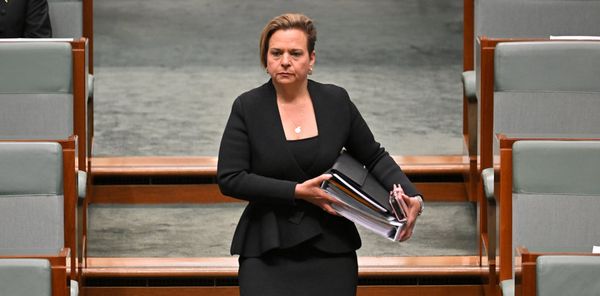
Abortion rights advocates in Ohio filed a lawsuit on Monday, claiming that state Republican leaders are trying to confuse voters on a ballot measure about access to reproductive healthcare.
Last week, the Ohio ballot board – led by the Republican secretary of state, Frank LaRose – approved the wording of Issue 1, a November ballot measure that will ask voters if the state constitution should guarantee a right to abortion, contraception, fertility treatment and miscarriage care.
The new lawsuit accuses the ballot board’s Republican majority of presenting voters with a confusing summary of Issue 1 in an attempt “to mislead Ohioans and persuade them to oppose the amendment”.
According to the lawsuit filed with the Ohio supreme court, the ballot board was asked to “put the clear, simple 194-word text of the Amendment itself on the ballot, so that voters could see exactly what they were being asked to approve”.
Instead, the board approved a summary of the amendment that is longer than the amendment itself, replacing the term “fetus” with “unborn child”. The summary also does not mention the other forms of reproductive healthcare guaranteed by the amendment, like access to contraception and fertility treatments.
The summary does not change the content of the constitutional amendment itself, but abortion rights advocates worry that it will mislead voters at the ballot box, dissuading Ohioans from supporting Issue 1.
“The ballot board’s members adopted politicized, distorted language for the amendment, exploiting their authority in a last-ditch effort to deceive and confuse Ohio voters ahead of the November vote on reproductive freedom,” said Lauren Blauvelt, a spokesperson for Ohioans United for Reproductive Rights, the abortion rights coalition leading the lawsuit.
The legal battle over the language of the Ohio ballot measure is the latest attempt to block voters from passing a state constitutional amendment on reproductive rights.
Earlier this month, Ohio Republicans held a costly special election in an attempt to make it more difficult for voters to amend the state constitution. In a resounding failure for the Ohio GOP, voters overwhelmingly rejected the proposal, opting to keep the current method of passing citizen-led amendments.
A recent poll from USA Today Network/Suffolk University showed rising support for a state constitutional amendment protecting the right to abortion.
LaRose last week tweeted that the amendment was a move from “the radical left”.
In the ballot board meeting, LaRose told members that he thought his summary of the amendment was “fair and accurate”.
“We tried to summarize that the best way we can and make it a clear statement here in the ballot language of what this amendment would actually do,” he said.
LaRose, an avowed abortion opponent, launched his campaign for US Senate last month.
The Ohio Capital Journal revealed that LaRose’s campaign received a $1m donation from a new soft-money group established by the conservative lawyer David Langson, who also funded at least two additional campaigns to block the passage of the reproductive rights amendment.
Other Ohio Republicans – like the state attorney general, Dave Yost – share LaRose’s staunch opposition to abortion.
But the lawsuit commended the attorney general for setting aside his personal views on abortion to “lawfully and impartially” complete his “amendment-related duties”.
In March, Yost approved the summary language of the amendment submitted by abortion rights advocates, writing in a certification letter that the language was a “fair and truthful” explanation of the proposed changes to the Ohio constitution.
“My personal views on abortion are publicly known,” Yost wrote.
But the attorney general added that he could not “use the authority” of his office to unfairly influence state policy.
He added: “Elected office is not a license to simply do what one wishes.”







